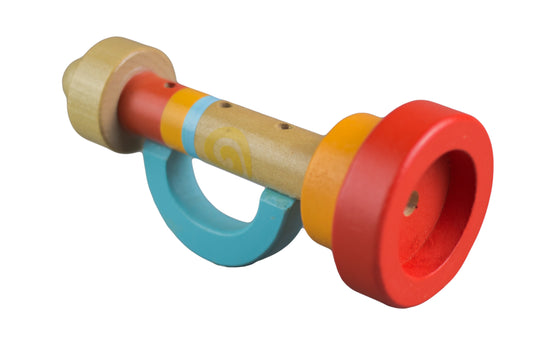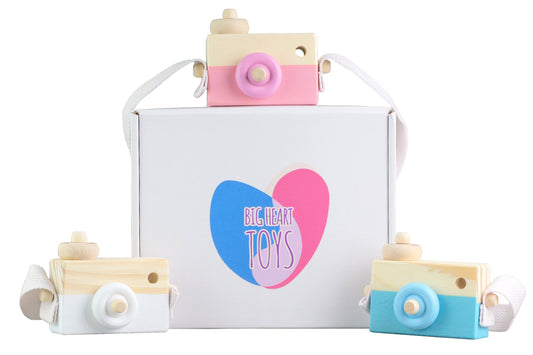Pretend play is a cherished childhood pastime, offering a world of imagination and creativity. For children with autism, engaging in pretend play can be a unique and enriching journey. Understanding the nuances of pretend play in the context of autism sheds light on children’s remarkable creativity, highlighting its therapeutic and developmental potential.
What Is Pretend Play?
Pretend play, often called imaginative, symbolic, or dramatic play, involves children using their imagination to create scenarios, roles, and narratives that may not involve real objects or actions. In pretend play, children immerse themselves in make-believe situations, taking on different roles, mimicking real-life activities, and using objects symbolically.
Examples of pretend play include role-playing, where children act as doctors, superheroes, or parents, using associated behaviors and actions, as well as object substitution, where one item represents another, like a block becoming a phone.
Children engage in storytelling, create imaginative scenarios, and imitate real-life activities, all of which contribute to their cognitive, social, and emotional development. A fundamental aspect of childhood development, pretend play is a powerful tool for fostering creativity, social skills, problem-solving abilities, and language development.
Why Is Pretend Play Important for Children?
Pretend play offers many benefits that extend far beyond the realm of imagination. It's a cornerstone for cognitive development, allowing children to engage in abstract thinking and problem-solving as they create scenarios, plan actions, and think critically about the roles they assume.
It also significantly enriches language skills, fostering vocabulary expansion and communication abilities as children narrate their make-believe experiences.
Pretend play is also a powerful tool for the development of social and emotional skills. It encourages cooperation, negotiation, and empathy as children interact with peers in shared pretend scenarios. It creates a safe space for them to express and manage their emotions, enhancing their emotional intelligence.
Pretend play promotes problem-solving by encouraging children to tackle challenges and devise solutions within their imaginative scenarios. It bolsters motor skills through actions like manipulating objects, handling tools, and engaging in physical movement, contributing to fine and gross motor development.
Most importantly, pretend play nurtures creativity, allowing children to explore, experiment, and think outside the box, ultimately fostering a sense of wonder and a lifelong love for learning.
How Does Autism Affect a Child’s Play?
Autism is a complex neurodevelopmental disorder that affects a child's play in various ways. Characterized by challenges in social interaction, communication difficulties, and repetitive behaviors, autism can significantly impact play experiences.
Children with autism may exhibit limited variety in their play, often showing a preference for a particular toy or activity, repeating it over and over due to a need for predictability and comfort. This repetitive play can include activities like lining up toys or spinning objects, which provide sensory stimulation.
Difficulties with social interaction can hinder social play, making it challenging for children with autism to engage in cooperative or interactive play with peers. Their limited understanding of social cues and difficulty establishing reciprocal relationships can further isolate them during playtime.
Limited pretend play is another common effect of autism, as children may struggle to engage in imaginative and role-playing activities. Their difficulty with abstract thinking can make it challenging to create and sustain make-believe scenarios. Additionally, sensory issues, often prevalent in autism, can influence a child's play.
Sensory sensitivities may make them averse to particular textures, sounds, or visual stimuli, affecting their choice of toys and play activities. Understanding the unique ways autism affects a child's play paves the way for tailored support and interventions that can help children with autism engage in play that aligns with their needs and preferences.
How Do Children With Autism Engage in Pretend Play?
Children with autism often engage in pretend play in ways that reflect their unique sensory, social, and cognitive profiles. One significant difference is that they may tend to interpret pretend scenarios more literally. They might struggle with the concept of imaginative play and instead prefer activities that mimic real-life actions, like arranging objects or engaging in repetitive routines.
Children with autism often incorporate their intense and focused interests into their pretend play, using them as central themes in their imaginative scenarios. Sensory sensitivities, common in autism, can also shape the type of pretend play activities they choose, influencing their sensory preferences. They might often prefer solo play during pretend scenarios due to their challenges with social interaction and communication.
All this can manifest as repetitive behaviors, which may extend into their pretend play. Recognizing these unique play styles and offering specific interventions can help expand their range of play activities, fostering creativity, social interaction, and communication while respecting their individual needs, interests, and strengths.
How Can Parents Encourage Pretend Play in Children With Autism?
Encouraging pretend play in children with autism is valuable for their development and offers a way for parents to strengthen their bond with their children. Playtime allows parents to dedicate quality time to their children, away from the demands and distractions of daily life.
This special time reinforces the child's sense of importance and belonging within the family. It creates a platform for learning, bonding, and encouraging lifelong skills and values.
Start Simple
Playtime provides an opportunity for parents and children to connect on a deeper level. Engaging in play promotes the emotional bonds, trust, and strong sense of security essential to a healthy parent-child relationship.
What matters here is intentional time together. Begin with uncomplicated scenarios and gradually introduce complexity as the child becomes more comfortable with imaginative play.
Use Visuals
Visual supports, such as pictures or storybooks, can help children understand and engage in pretend scenarios more easily, providing a helpful structure for play.
Many children with autism are visual learners, meaning they understand and process information better through visual cues, such as images, symbols, or charts. Visual supports provide a means to convey information in a way that aligns with their preferred learning style.
Follow Their Interests
Incorporate their specific interests into pretend play to motivate and engage them. Creating scenarios around their passions can be highly effective and motivating. Rather than feeling forced, incorporating a child’s specific interests can make pretend play feel more natural.
Role Play
Model pretend play by demonstrating different roles or characters, then encourage your child to participate. This interactive approach helps them understand the concept of imaginative play.
Role-playing is a versatile and valuable tool for children's development. It contributes to cognitive growth, language development, social skills, empathy, creativity, confidence, and emotional regulation.
Narrate While Playing
Describe the actions and scenarios during play, helping children build language skills and encouraging them to express their thoughts and ideas. Doing so also engages their cognitive skills, encourages critical thinking and problem-solving, and stimulates narrative abilities, enabling them to structure and convey their thoughts coherently.
Use Toys That Encourage Pretend Play
Select toys and props that promote imaginative scenarios, such as toy tool kits, dolls, costumes, or instruments. Toys stimulate imagination and increase engagement during playtime.
They serve as the building blocks of pretend play, facilitating creativity, role-playing, and storytelling. Toys are a tangible means for children to explore and express their imagination, making play a vibrant and constructive learning experience.
Be Patient
Allow your child time to adjust to pretend play at their own pace. It may take time for them to feel comfortable and confident in these scenarios. Remember that every small step is a step in the right direction, and consistency is key to allowing this type of play to feel more normal for your child.
How Does Big Heart Toys Support Pretend Play for Children With Autism?
Big Heart Toys is a dedicated and compassionate ally in supporting the development and well-being of children with autism through the power of pretend play. Understanding the unique challenges and needs of these children, we offer a range of carefully curated options designed to encourage imaginative play and teach essential skills.
Big Heart Toys' collection empowers parents and caregivers to provide their children with autism with the tools they need to engage in meaningful and beneficial pretend play in an affordable and accessible way.
Our playsets are designed to immerse children in specific scenarios and narratives. These toys not only stimulate imaginative play but also provide structure and guidance, making it easier for children with autism to understand and engage in pretend scenarios.
We also understand the significance of sensory considerations for children with autism. Many of our sensory-friendly toys, feature comfortable textures, calming colors, and interactive elements that cater to different sensory preferences.
Big Heart Toys serves as a compassionate partner in guiding and enhancing pretend play experiences for children with autism. Our diverse range of toys helps you create a supportive and therapeutic environment that fosters imaginative journeys while promoting holistic development.
The Bottom Line
A source of joy and creativity, pretend play offers a wealth of benefits, including language development, social skills, cognitive growth, and emotional regulation. Understanding the distinct ways children with autism engage in imaginative play and recognizing the supportive role parents play in this journey is essential.
Big Heart Toys is a dedicated companion in this endeavor, with resources to empower parents and caregivers as they guide and enhance their child's imaginative adventures while promoting crucial skills. By helping prepare children with autism for social and playtime interactions, we are dedicated to helping them grasp the expectations and nuances of pretend play.
For further insights and information on supporting children with autism through pretend play, we encourage you to explore our other blogs. Don't forget to sign up for our newsletter, where you'll find a wealth of resources, and visit our product page. Let's embark on this journey together, creating a world of imaginative possibilities for children with autism.
Sources:
What Is Cognitive Development | Help Me Grow Minnesota






